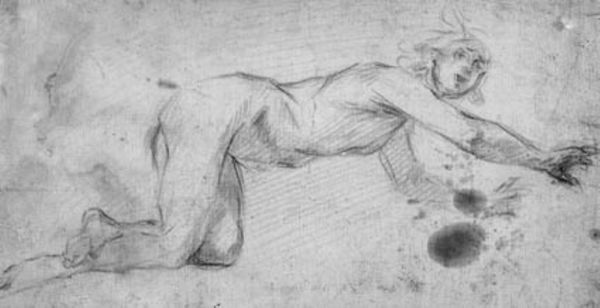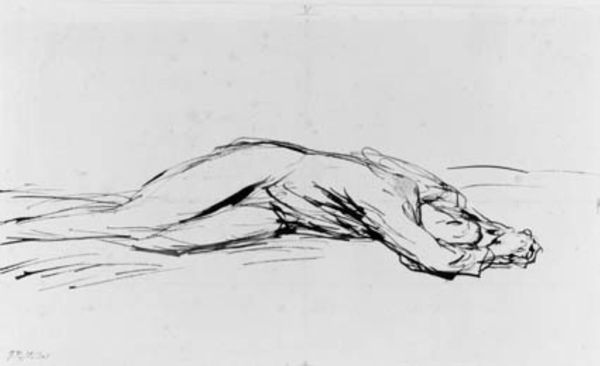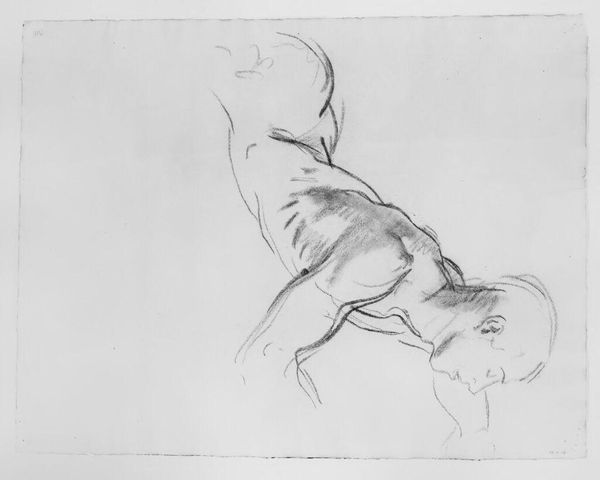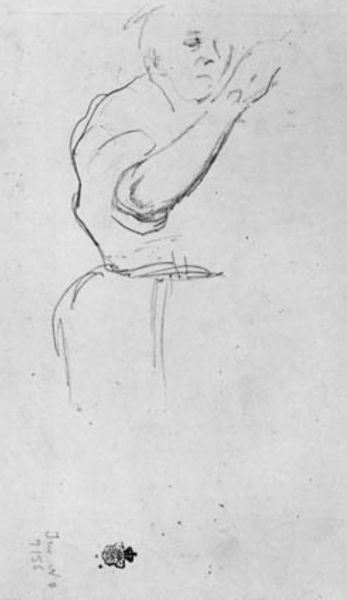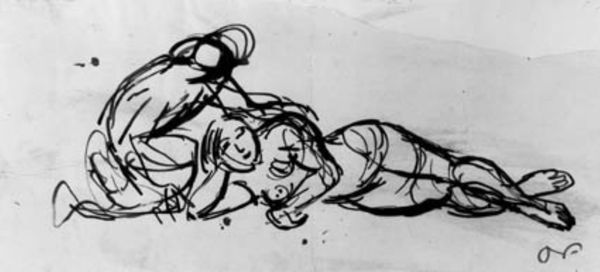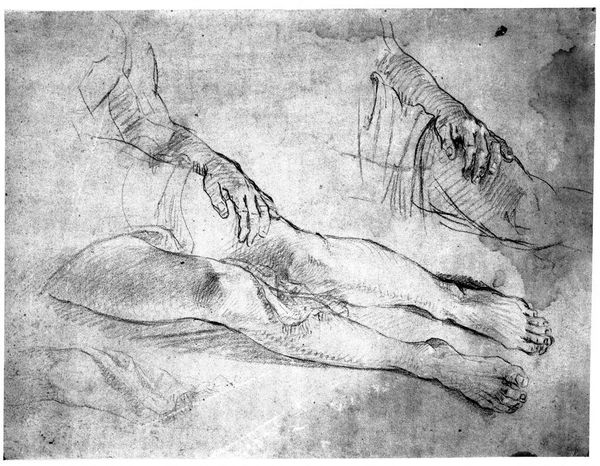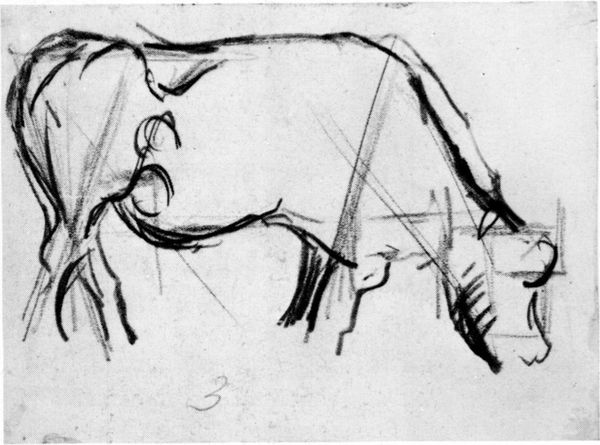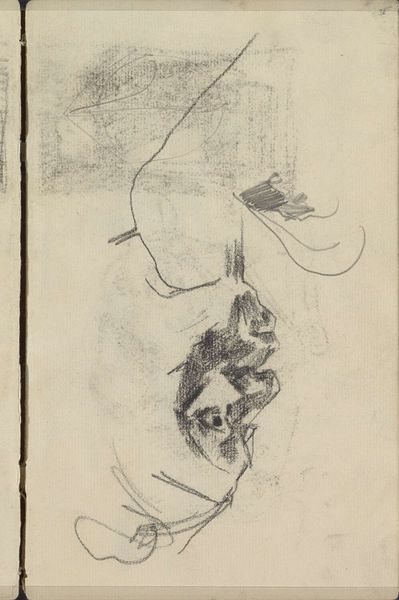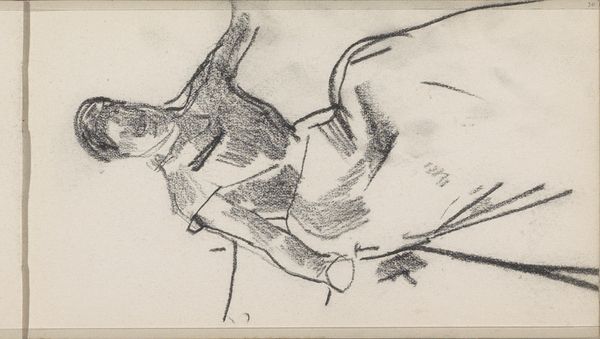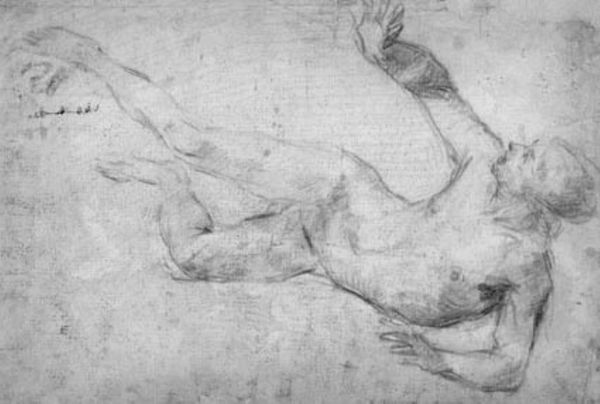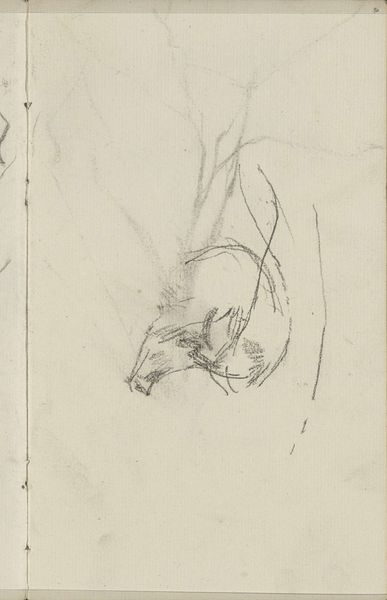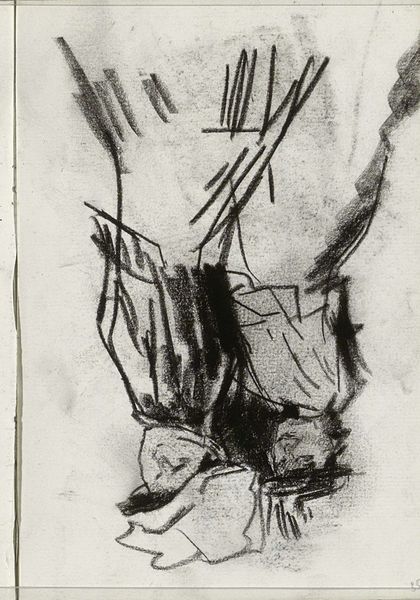
Studieblad med liggende hanløve, set fra bugen, med hovedet mod højre 1821 - 1892
0:00
0:00
drawing, pencil
#
drawing
#
landscape
#
pencil
#
realism
Dimensions: 100 mm (height) x 211 mm (width) (bladmaal)
Curator: This is Pierre Andrieu’s pencil drawing, "Studieblad med liggende hanløve, set fra bugen, med hovedet mod højre," which roughly translates to “Study sheet with a reclining male lion, seen from the belly, with its head to the right”. It's part of the collection at the SMK, dating from between 1821 and 1892. Editor: Ah, I see. My initial sense is one of profound languor. The lion seems utterly at peace, belly exposed—vulnerable yet powerful in its rest. The pencil strokes themselves seem relaxed, almost echoing the subject’s ease. Curator: Exactly. Look at the visible pencil marks, the raw materiality of the paper contrasting with the dense shading used to render the lion's mane. It reveals a direct connection to the artist's hand, reminding us that this isn't just an image of a lion, but a product of labor. The means of production are laid bare, challenging the romanticized view of animal art. Editor: Yes! I love that you point out the vulnerability. It also feels intimate to me—a glimpse into a private moment of raw nature, the mundane details becoming incredibly potent through observation and translation to this two-dimensional space. Almost like he has let the viewer into the den with him... Curator: Precisely! We have a human relationship with the animal in a new way because we consider what Andrieu put into bringing this drawing to life, but also its very purpose. This, too, gives us an insight into the cultural context and consumption of this type of art as "landscape". These lions aren't a depiction of any location or the "landscape" the way someone such as Rousseau saw lions, so how else is landscape used. The sketch exists as study or practice but the subject would most certainly be posed and confined. The animal then becomes a commodified symbol of power used by the ruling class. Editor: I get such joy when looking at it knowing that his choice to lie with his soft belly up to the viewer has in a sense reversed the idea that humans have a right to dominion over these wild beasts. Thank you for sharing this fascinating piece of work with me, my dear. It is so enriching. Curator: Absolutely. Thank you for illuminating the ways our interpretations can differ with this sketch and provide fresh ideas about production and power in our art's context.
Comments
No comments
Be the first to comment and join the conversation on the ultimate creative platform.
